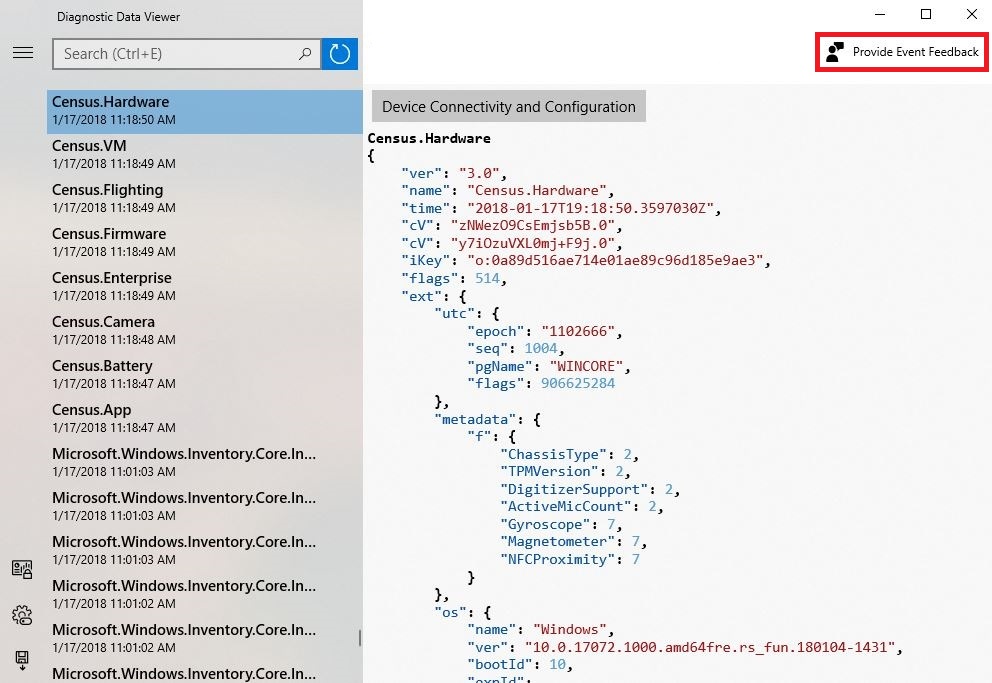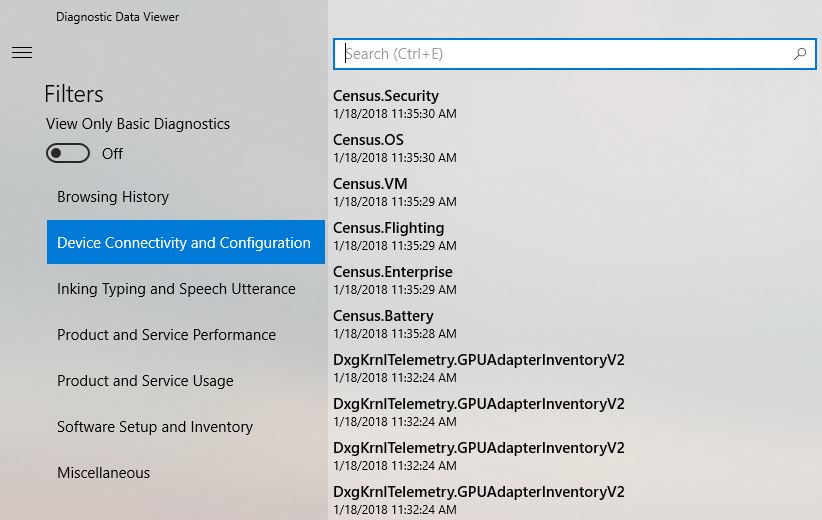Microsoft introduces new privacy tools ahead of Data Privacy Day

In a world that’s constantly evolving with new technologies like Artificial Intelligence and smart devices, our commitment to deliver on our Privacy Principles and work with you to evolve the Windows privacy experience doesn’t change.
To kick off the new year ahead of Data Privacy Day we are giving our Windows Insiders an early preview of the Windows Diagnostic Data Viewer coming in our next release of Windows. Our commitment is to be fully transparent on the diagnostic data collected from your Windows devices, how it is used, and to provide you with increased control over that data. This is all part of our commitment to increase your trust and confidence in our products and services.
In addition, the Microsoft Privacy Dashboard will enable you to see and manage more data associated with your Microsoft account. These changes are part of the greater enhancements we are rolling out now and in the coming months.
Windows Diagnostic Data Viewer:
The Windows Diagnostic Data Viewer provides even greater transparency to all the diagnostic data received from your Windows device. Available to everyone in the Microsoft Store, the Diagnostic Data Viewer is separate from the Microsoft Privacy Dashboard and allows you to see, search, and take action with your diagnostic data.
You are able to see and search all Windows diagnostic data that’s in the cloud related to your specific device.
The diagnostic data presented in the menu includes;
- Common Data, like the Operating System’s name, the Version, Device ID, Device Class, Diagnostic level selection and so on.
- Device Connectivity and Configuration such as device properties and capabilities, preferences and settings, peripherals, and device network information.
- Product and Service Performance data that show device health, performance and reliability data, movie consumption functionality on the device and device file queries. It’s important to note that this functionality is not intended to capture user viewing or, listening habits.
- Product and Service Usage data includes details about the usage of the device, operating system, applications, and services.
- Software Setup and Inventory such as installed applications and install history, device update information.

The Diagnostic Data Viewer provides you with the features such as view, search and filter of your diagnostic data, as well as the ability to provide feedback about the viewer.

Microsoft Privacy Dashboard
We’ve updated the Microsoft Privacy Dashboard with a new Activity History page which provides a clear and easy to navigate way to see the data that is saved with your Microsoft account. The Microsoft Privacy Dashboard allows you to manage your data and change what data is collected by adjusting the privacy settings on your device or browser at any time.
And in the coming months, we’ll also bring additional features that will allow you to;
- View and manage media consumption data, as well as product and service activity on the Activity History page
- Export for any of the data you see on the dashboard
- Delete specific items to allow for greater individual control
Participants in the Windows Insider Program will have the first opportunity to explore all of these new features. They’ll also get an early look at some additional changes in functionality and settings in the coming weeks, and we’re looking forward to their feedback.
Your data privacy will continue to be a priority towards making Windows 10 the best and most secure experience. From improving in-product control, transparency and information about your privacy, while providing a complete list of the diagnostic data collected at the Basic level, among others, to launching the Microsoft Privacy Dashboard and the enhancements we’ve made since then, we want you to be able to easily see and manage your activity data online across multiple Microsoft services.
I look forward to the continued dialogue around our privacy enhancements and welcome you to submit your feedback here, too.
Microsoft introduces new privacy tools ahead of Data Privacy Day



